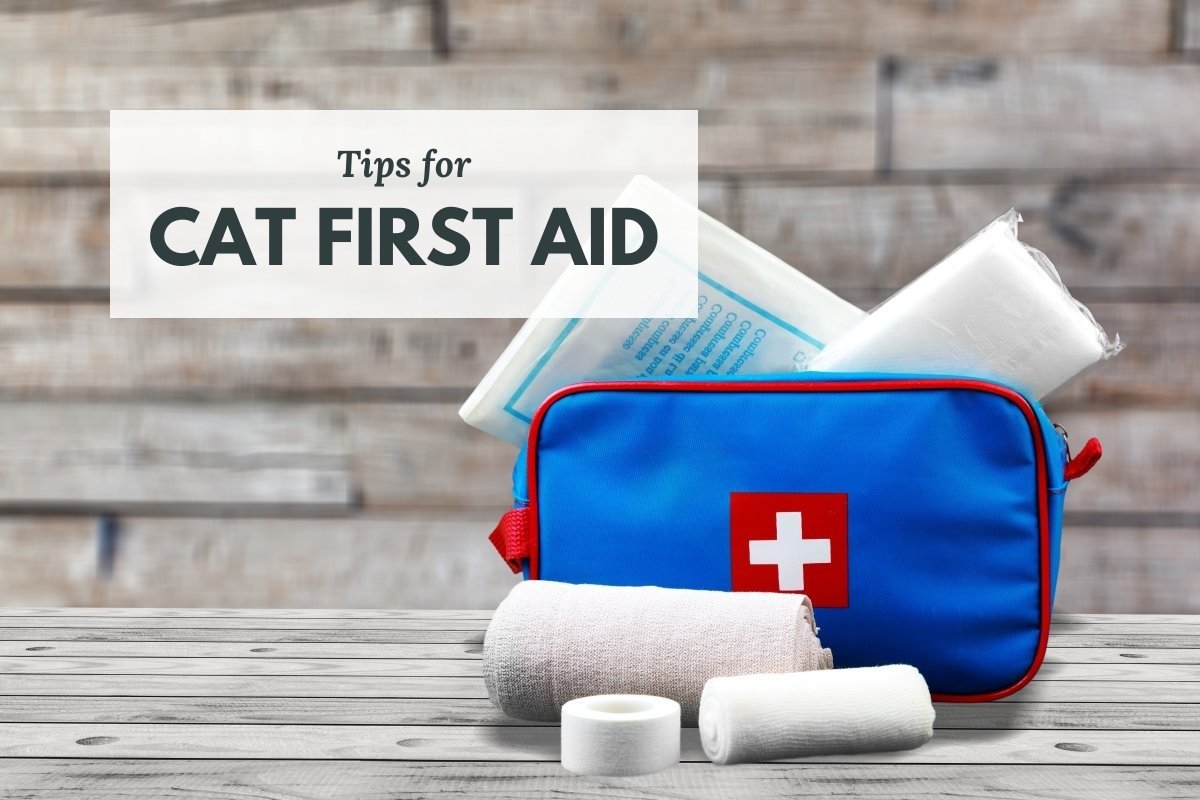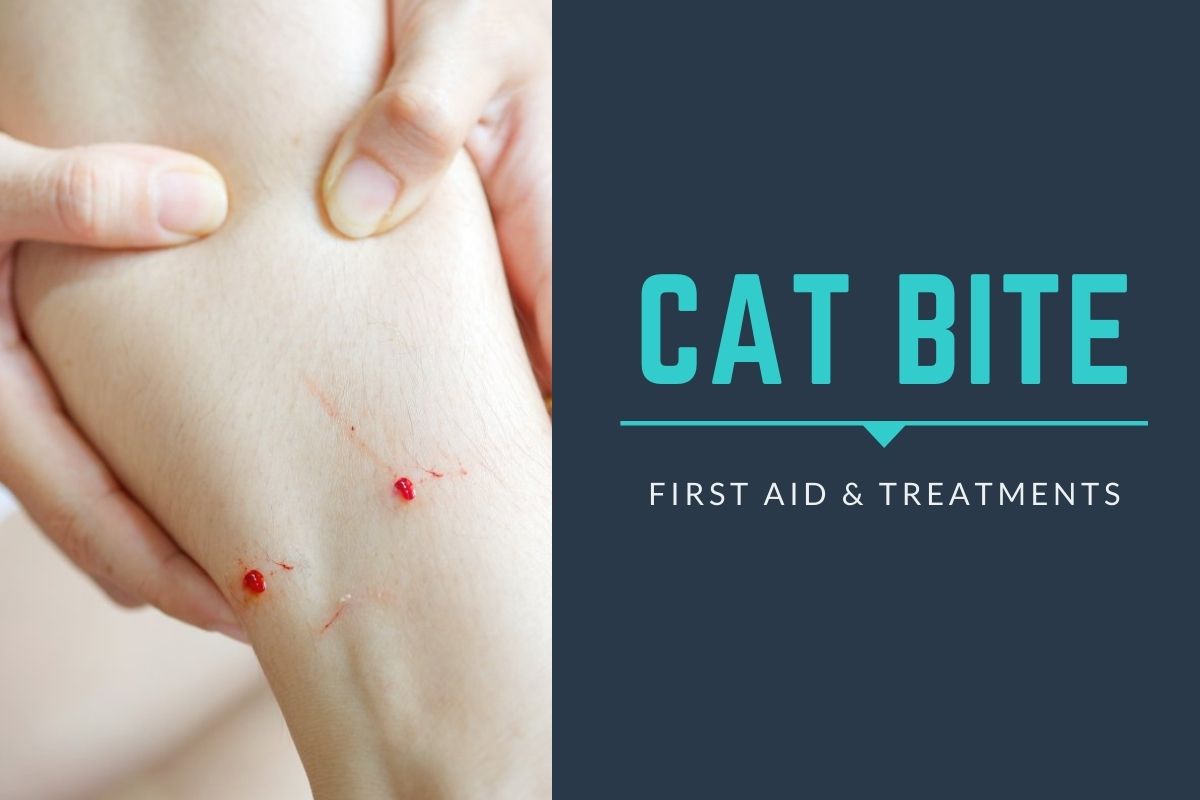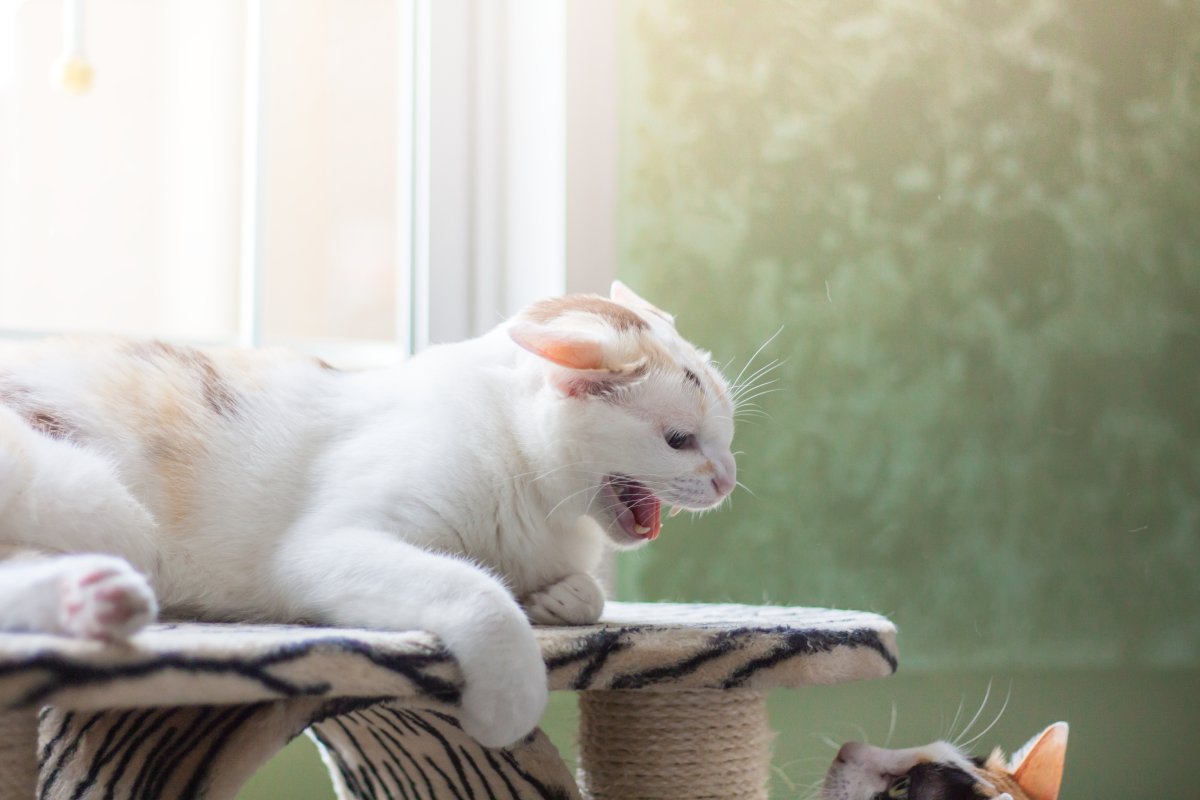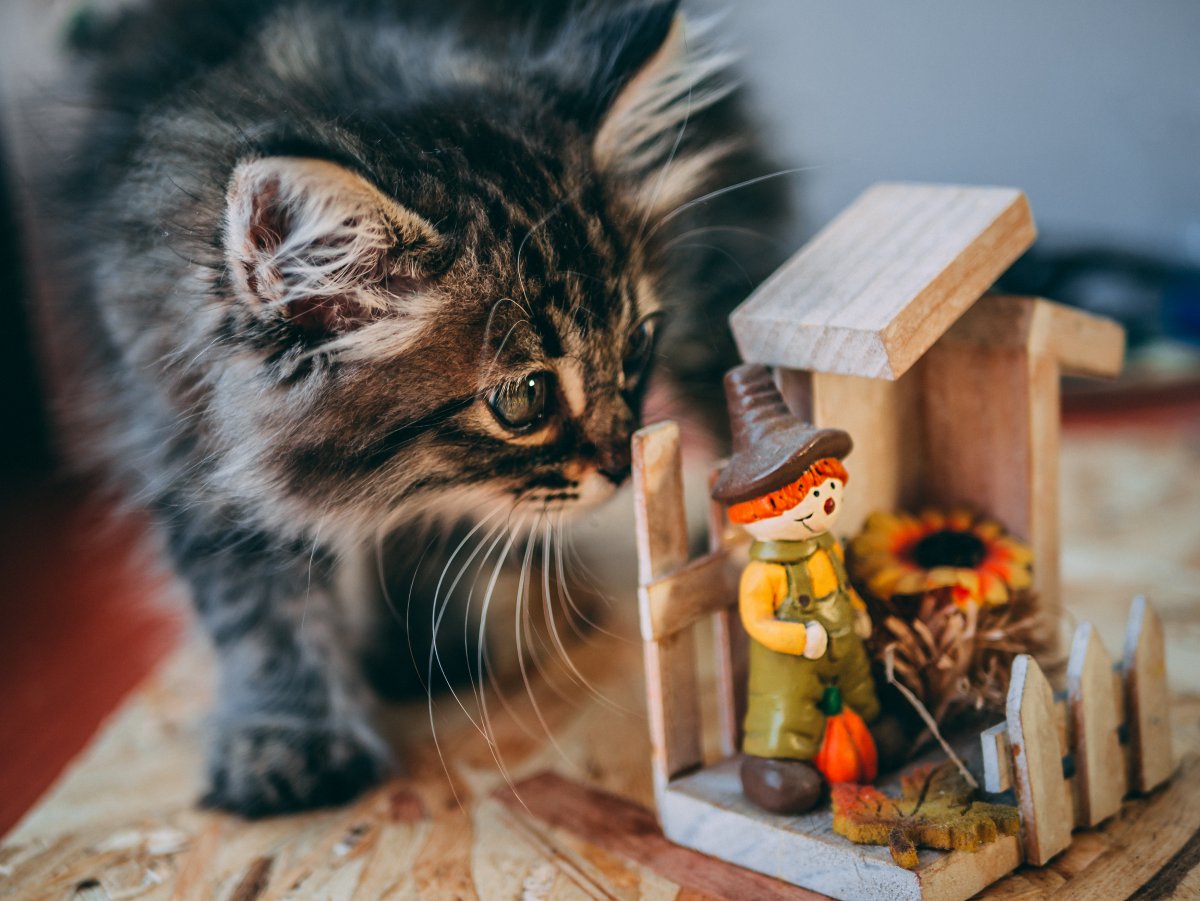Nothing is scarier than when your pet gets injured, and you have no idea how to help it. Panicking is our first reaction and then hurrying to the vet for the tiniest cut is our second. Read on to forgo the panic attack phase and directly jump towards helping your pet without rushing to the vet!
Yes, it would be best to take your pet to the vet after they get injured, but instead of rushing and panicking over the most minute injuries, here are a few tips that will help you stabilize them and keep you calm until you can take them to the veterinarian.
Our cats are curious by nature; this means exploring every single thing, no matter how dangerous it might be. This starts with climbing trees, the top of your closet, to going into the garden and exploring among the cactus plants, which leads to a few cuts and injuries that may need immediate cat first aid.
So, here’s what you can do:
How to Tell if Your Cat Is in Pain?
You know how you get irritated with people who don’t tell you when they’re hurt; they just suffer in silence? Yeah, cats are like that! You won’t know their hurt until you coax it out of them!
Even though cats are curious creatures, they are also quite secretive. They may love you very much, but when they get injured, they’ll suffer in silence and won’t show you their injury on their own. As a cat parent, you have to be extra observant and look for the following signs and symptoms to know if your cat is injured.
- Lack of appetite
- They become aggressive towards everyone, people and other animals
- Keep licking one particular part of their body
- Excessive sleeping
- They start hiding in dark places or stay inside their kennels
- Less grooming
- You see them limping or having difficulty walking
- Their breathing starts getting quick and shallow
- Instead of playing, they start growling and hissing.
Now that you’ve figured out the symptoms and determined that they are injured or ill in some way, let’s drop the panic phase and jump right into helping them.
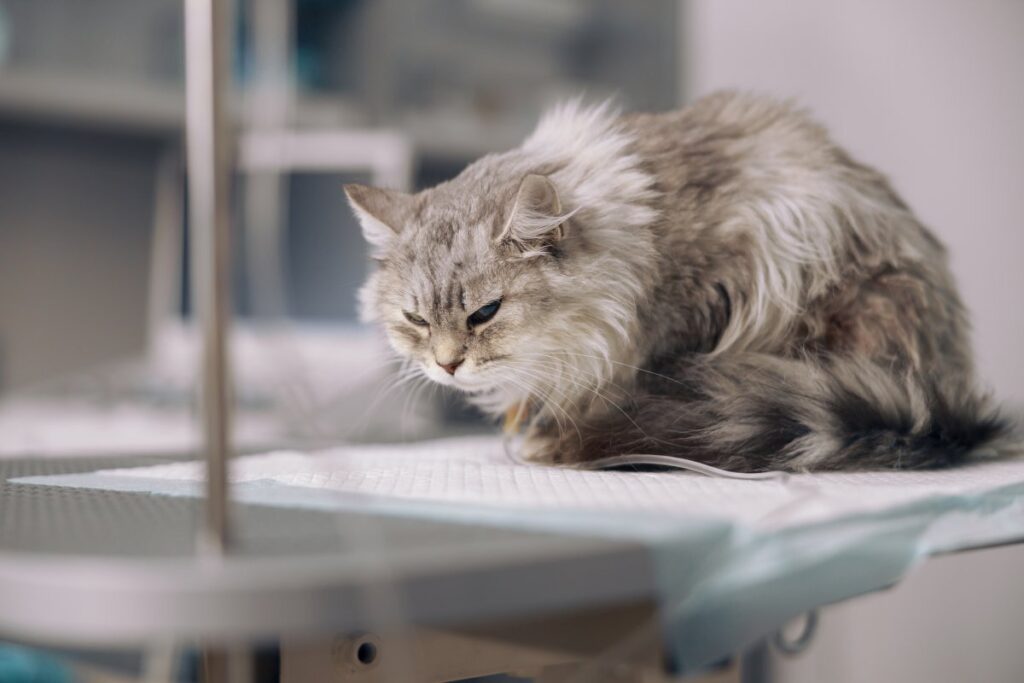
Supplies to Have In Your First Aid Kit
Whether you have an injury, your family members, or your pet, an emergency kit is essential. Now, let’s see what you should keep in your cat first aid kit at home.
Tools Are a Must
Tools that might come in handy in an emergency are tweezers, latex gloves, scissors, flashlight, turkey baster, and rectal thermometer.
Supplies to Help With a Wound
Some necessary supplies that you should keep in your first aid box in case your cat gets injured are Q-tips, gauze pads, splints, cotton swabs, bandages, adhesive tape, and tongue depressants.
Antiseptic Products
If you see an injury, you need to have some kind of antiseptic substance to sanitize the wound and bandage it. So, make sure your first aid kit contains alcohol swabs, hand sanitizer, antiseptic lotion, and styptic liquid.
Other Assortments
Other miscellaneous things that are quite useful in case of an injury are instant hot/cold pads, water, muzzle, leash, carrier, harness, your pet’s vaccination documents, and medical records.
Now, no need to hyperventilate; you’ve got everything in order!
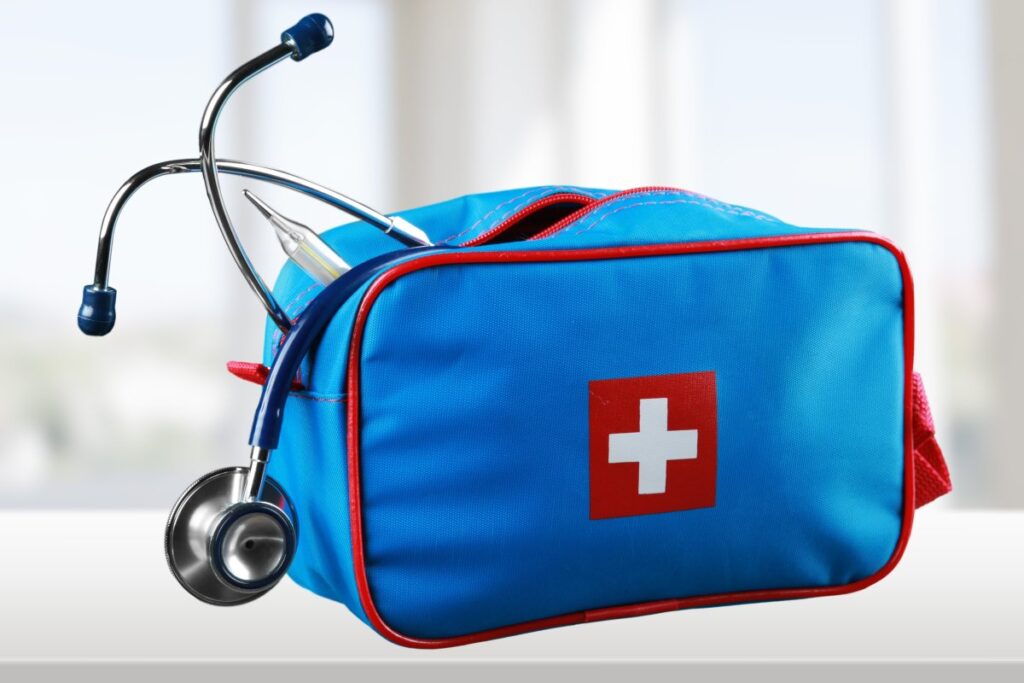
Tips for Effective Cat First Aid
When your cat is injured or in pain, it makes a huge difference when you know how to help them. You remain calm and level-headed because you know that your cat is already pretty scared. Cats have the ability to sense your emotions, so you don’t wanna make them feel worse by going into panic mode.
So, here’s what you should do in every emergency situation:
Bleeding Cat
If your cat is bleeding heavily; first and foremost, take out your ready-made first aid kit, and then follow these steps:
- You have to slow the bleeding and then apply some kind of bandage.
- Apply pressure with the help of a gauze or a clean cloth for about 10 minutes.
- If your cat is resisting, get someone else to help you out.
- Do not tie any kind of ligature around or near the wound; it can worsen the wound, or the bleeding can get worse.
- If you’re applying pressure, do not pull the cloth up to look if the bleeding has stopped because lifting it up can displace the clot that might have formed in the wound.
- Take a fresh bandage and wrap it around the injury.
- After that, seek out the help of a veterinarian as soon as possible.
Now, that wasn’t so hard, right!
Dealing with Broken Bones
You can’t fix a broken bone, and please don’t try putting a splint yourself because you don’t know which way the bone is broken, and putting a splint yourself means the bone healing in the wrong direction, providing discomfort to your cat for the rest of its life.
Support the broken area with a gentle touch and put a towel underneath it, ensuring not to jostle your cat much. Then lift your cat gently into its carrier and take him to the vet to get the bone into a cast correctly.
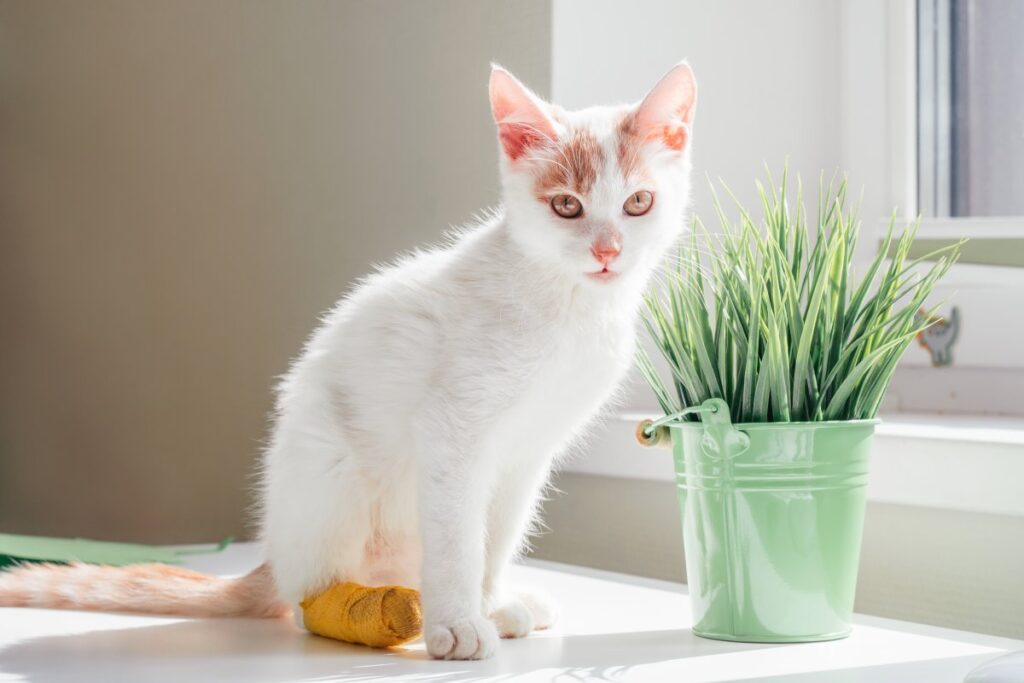
Cat First Aid for Burns
If your cat gets burned or scalded accidentally, no need to be alarmed, it’s not dying, just in a little pain, due to the mischief it got into.
Take a towel, soak it in cold water and gently apply it to the affected area, and you may use a saline-soaked cloth to shield the area. Don’t apply any sort of burn cream or ointment to the area because it might irritate the skin. Just take your cat to the vet and get the proper care for burns.
If Your Cat Gets Poisoned
If you know your cat has been poisoned by something it ate, don’t waste your time on cat first aid because you definitely don’t know what to do. Yeah, it’s a little panicky, but let’s take some long breaths, and then the first thing you should do is contact your vet and explain the situation. After that, if you know what your cat ate, take a sample, picture, or name of the poison. Then, take your cat to the vet so that immediate care can be provided.
How to Handle a Seizing Cat?
If your cat has gone through a seizure, the first course of action you don’t need to do is hold them down or try putting your hand in their mouth. Because they won’t swallow their tongue, but they will bite your hand.
What you need to do is remove any dangerous objects away from your cat because they can be potentially dangerous to them. Make sure your cat doesn’t hurt itself during the seizure. Let it run its course, which doesn’t last for more than 5 minutes. After that, either contact your vet, and they’ll guide you about the next course of action, or take your cat immediately to the vet.
Just don’t disturb it during the seizure; it can be hazardous to you or the cat; take action as soon as it ends!
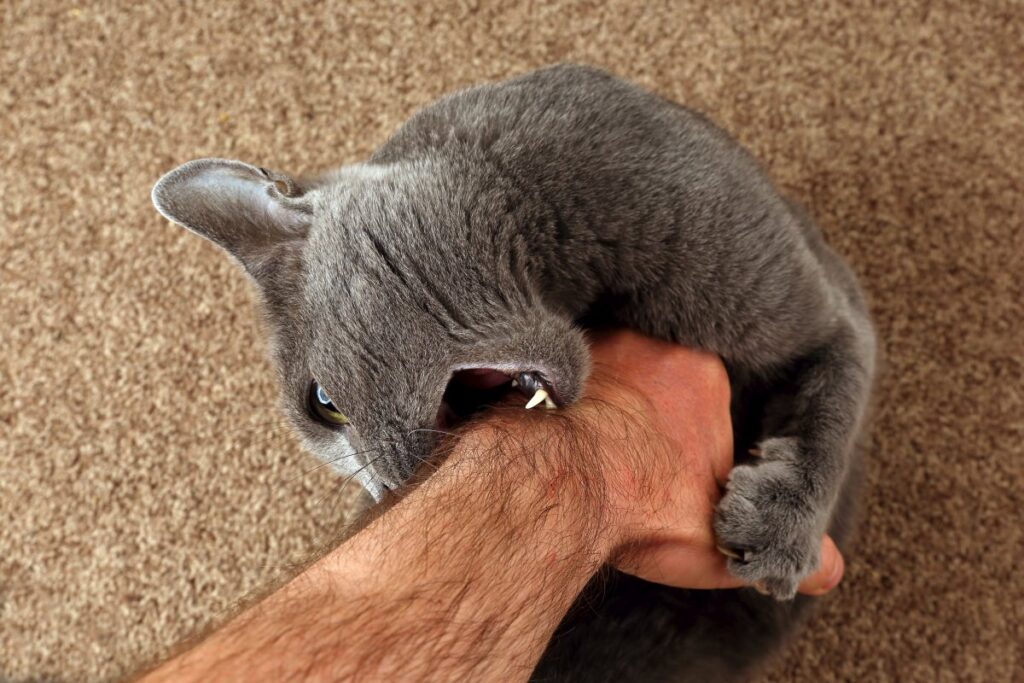
First Aid for Stings and Insect Bites
If your cat gets bitten or stung by an insect, take out your trusty cat first aid kit and follow the following steps.
- First, check if the stinger is still inside your kitty. If yes, then try carefully removing it with the help of tweezers.
- Ensure that you don’t squeeze the stinger, or you can release more poison in your pet.
- If you can’t take it out, leave it in and take your cat to the vet.
- After the stinger is out, use alkali-like baking soda with water and apply it to the affected area for insect or bee stings.
- In case of a wasp sting, you can use vinegar or lemon to clean the area.
- If you don’t know what insect it was, just use clean water and sanitize it a little.
- If the insect bit or stung your cat on the mouth, visit the vet immediately because it can cause swelling, and then your cat might have breathing issues.
Medical Aid for a Choking Cat
If you find your cat choking on something, wrap it in a towel and open its mouth. Make sure not to tilt their head backwards as the object can go inside them, and it might not be digestible. You’re going to need two people for this. Get one person to support the cat and hold it down. After that, get a pair of tweezers, and if the object is visible to you, pull it out using the tweezers. Your cat is safe!
If you can’t see the object or it’s in a damaging or injured position for the kitten from within, then contact your vet immediately and get your kitty into surgery as soon as possible.
Good job, you handled the situation marvelously!
Final Thoughts
You should always use the cat first aid to ensure that your cat is safe until it can get professional medical care. Never use it instead of a professional vet’s care because you don’t know how an animal’s body works, so if you play doctor yourself, you can put your cat in potential danger by making its injury worse.
Save your vet’s number; you never know when you’ll find it handy; cats are quite inquisitive creatures!

